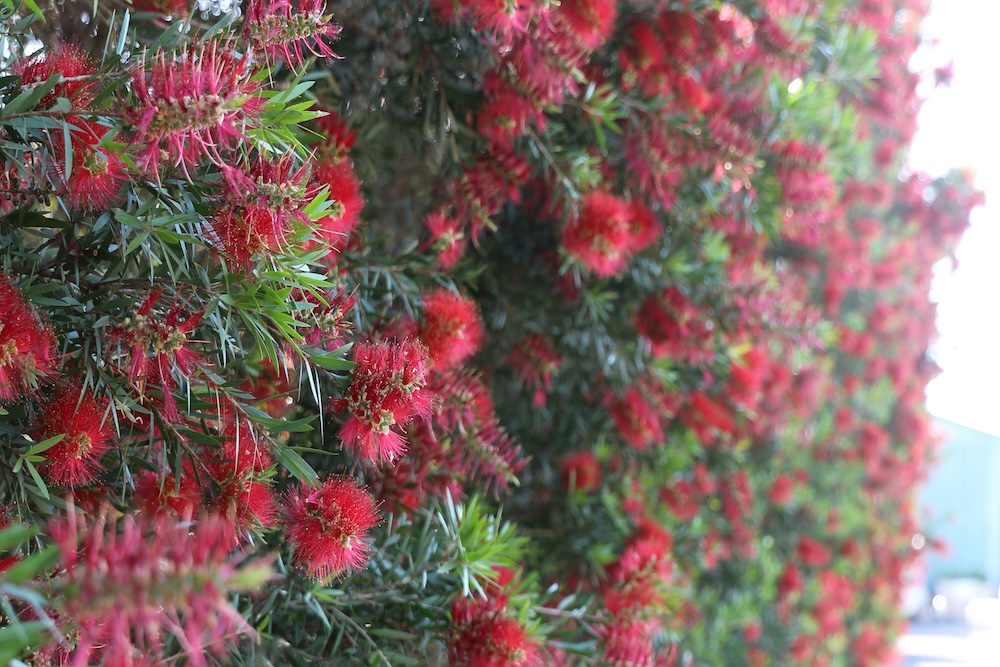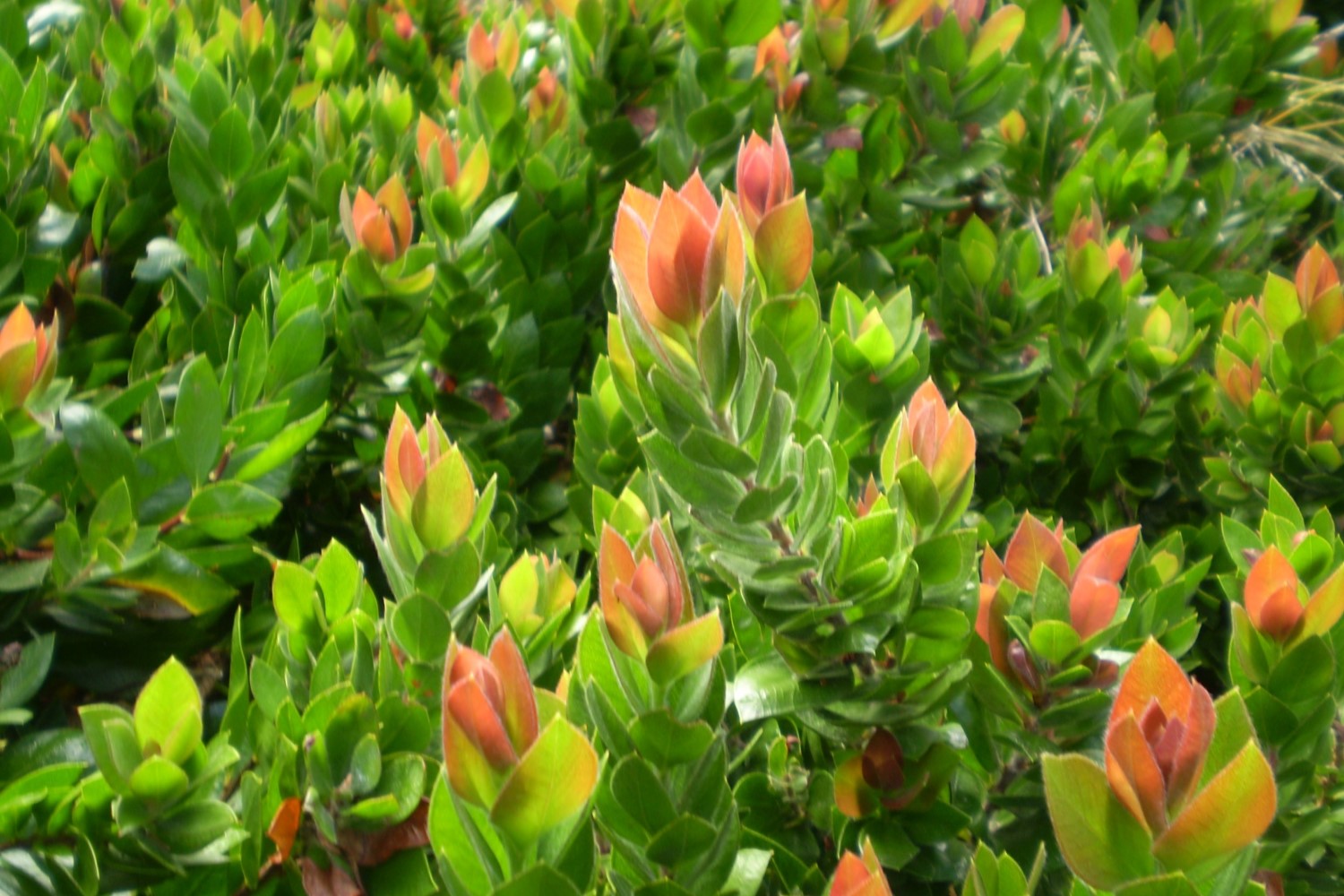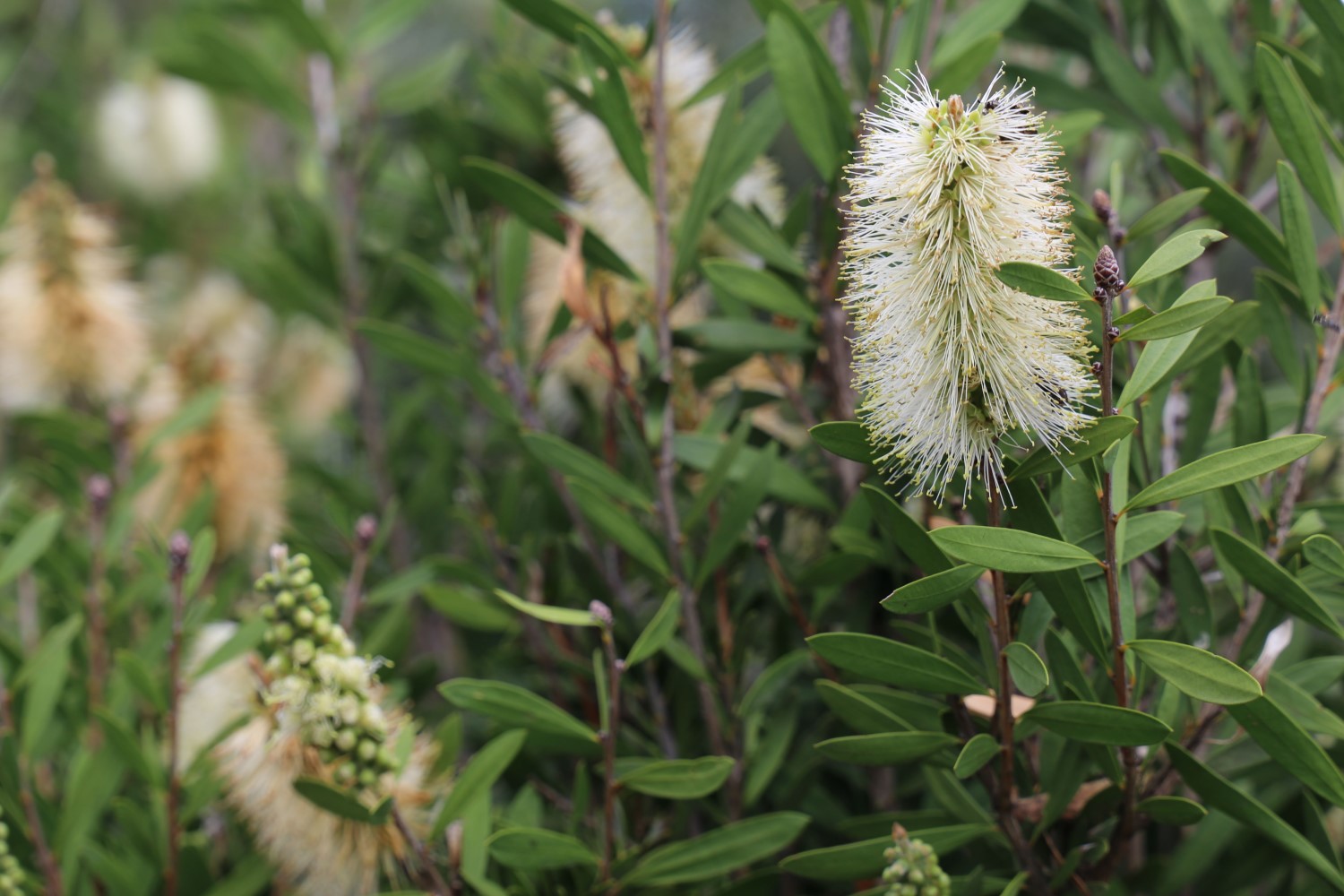Did you know that some of the plants we always thought were native to Australia are actually from Southern Africa?
Perfect Spacing of Your Callistemon Hedges: Bottlebrushes for Screening and Shape
Are you looking to create a stunning garden with perfectly spaced callistemon hedges? The spacing of your callistemon plants can make all the difference in achieving that WOW factor you’re looking for.
Incorrect spacing, whether it’s too big or too small, can result in an uneven or overcrowded appearance. In this article, we will provide expert tips and guidelines for spacing your callistemon hedges to perfection.

Understanding Callistemon Hedges
Callistemon hedges are a fantastic choice for any garden, offering both beauty and functionality. These hedges feature vibrant, bottlebrush-like flowers and evergreen foliage, making them visually appealing year-round. With different species and cultivars available, each with unique features, callistemon hedges offer versatility in design and can be tailored to suit various landscaping styles.
Factors to Consider When Planning Callistemon Hedge Spacing
- Growth Habit and Mature Size: Understanding the growth habit and mature size of your chosen callistemon variety is important when determining the appropriate spacing. Some types have a tall, upright growth habit, while others tend to be shorter and more spread out. You want your callistemon hedge to grow harmoniously, without plants becoming crowded or overshadowed.
- Function and Purpose of the Hedge: The function and purpose of your callistemon hedge determine the ideal spacing between plants. Whether you aim for privacy screening, windbreak, or simply want a decorative element, the spacing requirements may vary. For instance, if privacy is your primary goal, closer spacing might be necessary, whereas you can save money by purchasing fewer plants if you aren’t needing to block visibility.
- Over-Plant, Then Thin: If you’re looking for an immediate result, you can plant twice as many tubestock plants as you need, and then once the branches start to extend beyond each other, you can remove every second plant. That way, you won’t have to wait as long with large gaps between each plant.
Guidelines for Spacing Callistemon Hedges
Specific Callistemon Examples
There are a ton of Callistemon cultivars, each with their own unique growth habit and mature size. Here are some examples of the best-looking and most resilient options for Aussie gardens:
Slim™ Callistemon viminalis ‘CV01’ PBR:
This cultivar has a slim, upright growth habit, reaching a mature size of around 3m high x 1.3m wide. Plant them approximately 70cm-1m apart, depending how dense you’d like them to be and how quickly you’d like them to fill in.
Macarthur™ Callistemon viminalis ‘LC01’ PBR:
This bottle brush incorporates two of the most popular varieties on the market, Little John and Captain Cook. It features a more compact habit and better flower presentation, and grows to 1.8m high x 1.5m wide. Plant them 70cm – 1.2m apart.
Better John™ Callistemon viminalis ‘LJ1’ PBR:
With its compact and bushy growth habit, this cultivar reaches a mature size of 60cm – 1.2m high x 60 – 90cm wide. Spacing them 30cm – 60cm apart.
Red Alert™ Callistemon viminalis ‘KPS38’ PBR:
Known for its appealing red new foliage rather than its flowers, this cultivar has an upright growth habit, reaching a size of 2-2.4m high x 1.5-2m wide. Space them approximately 1m – 1.8m apart.

Fluro Burst™ Callistemon spp ‘CNU19’ PBR:
This cultivar features incredible hot fluro pink flowers that demand the attention of humans and pollinators alike. It grows to 1m – 1.5m high x 90cm-1.2m wide. Plant them 60cm – 1m apart. This is one of the brand new Burst Callistemon series that don’t require pruning to maintain their mature shape and feature incredible flowers.
Snow Burst™ Callistemon spp ‘CNU07’ PBR:
With contrasting dark green foliage and snow-white flowers, this cultivar won’t need pruning once it reaches its mature size of 80cm-1m high x 70-80cm wide. Plant them 40cm – 60cm apart.
Sweet Burst™ Callistemon spp ‘CNU15’ PBR:
If you’re looking for a bottle brush that has baby pink flowers, look no further. This one is great as a hedge or as a feature in any garden. It grows to 90cm – 1.2m high x 90cm – 1.2m wide. Plant them 60cm – 1m apart.
Icy Burst™ Callistemon spp ‘CNU01’ PBR
Our head breeder, Todd, reckons that this is the best callistemon that’s ever existed for hedging. It’s all got to do with this plant’s branching habit, where the branches all face upward rather than outward, making it extremely tight and compact.
The only downside is that there aren’t any branches on the bottom 30 cm, but that shouldn’t matter unless you’re expecting some weirdo to crawl along the ground with a pair of binoculars. It grows to 1.3-1.5m high x 70-80cm wide, so plant them 40-60cm apart for screening.

Creating a Uniform Hedge
A uniformly shaped hedge is desirable as it presents a neat, tidy, and visually appealing aspect to your garden. Proper spacing is required to achieve this uniform look.
It ensures that each plant gets enough sunlight, air circulation, and nutrients from the soil, and that there aren’t parts of the hedge with larger gaps or more dense growth.
While the exact measurement you choose for spacing might vary, it needs to be consistent between each plant. Use a tape measure to ensure the same distance between each plant before taking them out of their pots or digging your holes.
Make sure that each plant is receiving the same amount of sunlight, nutrients, water and soil quality as well. Otherwise, the plants will grow at different rates, creating a lopsided look to the overall hedge shape.
Planting Techniques
Establishing a callistemon hedge requires careful planning and execution. Here are some expert planting techniques:
- Measure: Use a measuring tape and place your pot plants on top of the ground as you determine where each one will go. Step back and make sure they’re all where you want them.
- Hole Preparation: Dig the planting holes twice as wide and exactly as deep as the root ball of your callistemon plant. This gives the roots plenty of room to grow and establish themselves in their new environment, without causing the stem to become buried under soil or mulch.
- Put the Plants in the Ground: Take your plants out of their pots, place them in the soil, backfill around the hole and make sure stems are in the air, and roots are in the ground. If appropriate, leave a bit of root ball above the soil to ensure mulch won’t cover the stem once it’s added. Before backfilling, you may want to add some soil amendments.
- Soil Amendment: Improve the soil by adding compost or organic matter. This helps improve drainage and nutrient availability, promoting healthy growth. On top of that, heavy clay may require gypsum or hydrophobic sand may require a soil wetter.
- Watering Practices: Water the plants thoroughly after planting. This helps settle the soil around the roots and reduces transplant shock.
- Mulching: Apply a layer of mulch around the base of the plants. This helps retain soil moisture, suppress weeds, and regulate soil temperature. Mulch can prevent water entering the root zone, especially when there’s no leaf material and it’s very fine. Choose your mulch carefully, and when in doubt choose an option with large chunks.
Daniel’s Wrap
Proper spacing plays a significant role in creating a beautiful and functional callistemon hedge. Whether you’re aiming for privacy, windbreak, or simply an ornamental feature that feeds the wildlife, a bottle brush hedge is always a good idea.




This Post Has 0 Comments